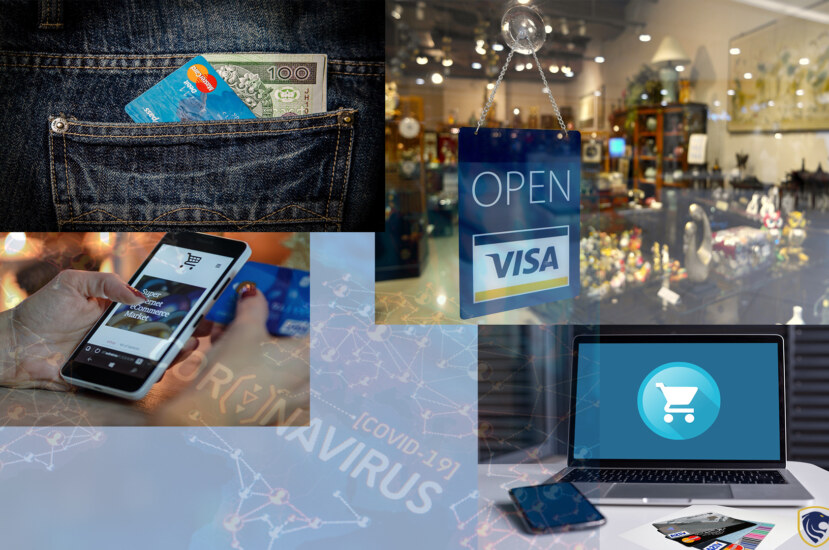Everybody knows it’s a great idea to have a credit card. You can pay for anything from gas, rent, clothes, and food with your card. Plus, it makes it so easy when you want to travel because you won’t need cash or checking account information in hand before you take off for the airport. Oh, and getting approved for a credit card is so easy too!

It’s time to face reality: life happens, and sometimes we need help managing our finances and/or emergencies that we weren’t expecting pop up. So what do you do if your card is lost or stolen? Not to worry, It happens to the best of us – it’s a tragedy, but it happens – and there are a couple of things you can do.
1) If you keep your card info stored in a password-protected folder on your computer or smartphone, go ahead and change that right away. Your security is more important than the 60 seconds it takes to type in all those numbers and letters.
2) If you don’t have that option, then use the most secure method available: put the card into a new plastic sleeve with a blank piece of business card stock inside of it, so it looks like an actual credit card wallet. That way, if the card is stolen, it won’t be as easy for someone to steal your card info.
If your card is lost or stolen, you’ll need to report it as soon as possible. The quicker you report it, the more quickly you can get a replacement.

You can always call the number on the back of your card and speak to a representative – they will help you take care of the situation so that no one else has access to your money or credit. If you wait a few days or a week before reporting the missing information, someone could have already used your information and racked up thousands of dollars worth of charges on your account.
When it comes down to it, being a responsible adult does not guarantee that you won’t have an unexpected expense come up. It just means that you should be as prepared as possible for those moments. Because let’s face it, if something unexpected happens, you’ll wish you had been ready with a credit card to help cover the costs.
Credit card interest rate
The Minimum monthly payment is the dollar amount you’re required to pay each month to keep your account balance from increasing. The maximum monthly payment is the dollar amount of your credit limit that you can use per month.
Minimum monthly payments are calculated as a percentage of the outstanding balance. The percentage of your credit limit for Maximum monthly payments depends on whether or not you have a fixed-rate card or a variable-rate card and on how good your credit history has been with that particular issuer.

If you have a fixed-rate card, then your maximum monthly payment will always be 10% of the assigned credit limit, no matter how high it may be. On the other hand, if you have a variable-rate card, then your lender will calculate your Maximum monthly payments as a percentage of the current average daily balance. This current average daily balance is determined at the beginning of each month by adding up all of the outstanding loan balances. It includes any new loans you’ve gotten within that period or have auto-debited from your checking or savings accounts.
Suppose you haven’t made any repayments during the previous month for this particular credit card. In that case, your maximum monthly payment will be based on what it would have been if you had paid the minimum amount that was required by law back then instead of what was actually paid. If this is the case, then you’ll pay more than what you would with a fixed-rate card.
And if you’re spending more than you’re paying in, then your Maximum monthly payment will be based on what it would have been if you had stopped using the card entirely instead of what was actually paid. As I mentioned before, there are different types of credit cards. There are cards that are secured by a deposit or collateral; these are known as secured cards. Then there are unsecured cards; these make payments directly to your lending institution as regular credit cards do. Variable-rate secured cards usually have the highest interest rates, along with the longest introductory periods, while variable-rate unsecured cards usually have the lowest rates.

Both of these factors determine your credit card interest rate. Your credit issuer will also take your financial history into account; for example, if you make your minimum payments on time every month and your total balances are always under 30% of your credit limit, then you can get a card with an interest rate of only 8%. This is because lenders assume that you won’t go over 30% of your limit in any particular month.
Fixed-rate secured cards
Fixed-rate secured cards usually have a 2-year introductory rate, although the card companies have been known to have longer periods of low interest rates. This means that you will typically pay less interest on your regular monthly payments for at least the first year of having the card. On the other hand, variable-rate secured cards usually have a 1-year introductory period.

In this case, if you’re not careful and end up going above 30% of your credit limit in any particular month, then you will end up paying more than what you would with a fixed-rate card. Secured cards are also easier to get compared to unsecured credit cards, while unsecured cards often have better rewards programs. When you request your credit limit increase, the bank will typically only give you an additional 10% of their original amount; this is known as a “hard pull” on your credit report.
Although they’re not quite as common anymore, there are still some banks that will allow you to request a credit limit increase of up to 100% of your original amount. This is known as a “soft pull” on your credit report, which can be helpful when you have little or no information in your credit file. If they so choose, the card issuer can still pre-authorize purchases on your credit card without actually giving you access to the money in that account.
Credit Card Survival Guide: What to Know And What To Do
This is unlike what happens with debit cards or any other type of automatic payments made through an authorized consumer’s checking account in which the money in that account is immediately taken out when the purchase is made. Pre-authorized transactions only allow you to make any purchases up to the amount of your credit limit; if you make a purchase for more than your credit limit, then the money will be taken out of your bank account.

The main purpose of pre-authorized transactions is to keep track of each purchase that’s made with an automatic payment. It can also help you avoid making unexpected charges on your credit card by paying less than the amount of the purchase. Many card issuers will allow you to block pre-authorized charges on your card if you wish, which is helpful if you’re always trying to save money by withdrawing less than the amount that’s due for your bill each month.




